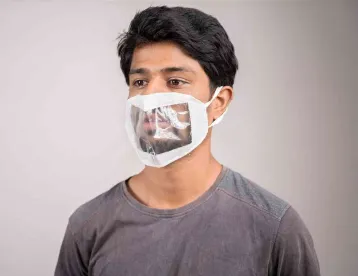What a difference three months makes. In May 2021, the Centers for Disease Control and Prevention (“CDC”) announced that fully vaccinated individuals could forgo masks and social distancing requirements in most indoor and outdoor locations. At that time, the Alpha variant was not all that transmissible in the fully vaccinated, and millions of vaccine shots were doled out each day. But now, with the increasing spread of the transmissible Delta variant, the CDC has updated its guidance to recommend that fully vaccinated individuals wear masks in public indoor settings in areas of substantial or high transmission.
I. CDC Reports That Infections in Fully Vaccinated People, While Rare, Still Occur
The currently authorized vaccines in the United States are highly effective at protecting vaccinated people against symptomatic and severe COVID-19. Fully vaccinated individuals are less likely to become infected and less likely to develop symptoms of COVID-19, even if infected.
As a result, the CDC has reported that only a small proportion of fully vaccinated people become infected with COVID-19, even with the Delta variant. When they do, these cases tend to be mild. But, preliminary data suggest that fully vaccinated people who become infected with the Delta variant can be infectious and can spread the virus to others.
The highly transmissible nature of the Delta variant has fueled a surge in cases around the country, especially in high transmission areas, places with low vaccination rates, and among the unvaccinated.
II. The New Mask Recommendations for the Fully Vaccinated
This emerging variant and stagnating vaccination rates led to the CDC’s updated guidance. It is important not to lose sight that fully vaccinated individuals can participate in many of the activities they performed prior to the pandemic. But, to maximize protection from the Delta variant and prevent possibly spreading it to others, the CDC now recommends masking for fully vaccinated individuals in certain contexts.
A. Recommendations for Indoor Settings
The CDC recommends that fully vaccinated people wear a mask in public indoor settings if they are in an area of substantial or high transmission. The CDC provides an interactive data-tracker for monitoring the COVID-19 pandemic in the United States, and it currently shows substantial or high transmission in large swaths of the entire country, except for the upper Midwest and Northeast.
The CDC also explained that fully vaccinated people can choose to mask regardless of the level of transmission, particularly if they or someone in their household is immunocompromised or at increased risk for severe disease. People at an increased risk for severe diseases include older adults and those with certain medical conditions, such as diabetes, overweight or obesity, and heart conditions, and the unvaccinated.
Going even further, the CDC recommends universal indoor masking for all teachers, staff, students, and visitors to schools, regardless of vaccination status. This is largely on account of the fact that children remain unprotected against the virus since vaccines are not authorized for those under 12, and many teenagers have yet to be vaccinated.
B. Testing for Fully Vaccinated Individuals
Beyond masking, the CDC added a recommendation that fully vaccinated individuals get tested if they are experiencing COVID-19 symptoms. Individuals who have tested positive for COVID-19 in the prior 10 days or who are experiencing any symptoms should also isolate themselves from others.
Yet even if not experiencing symptoms, the CDC added a new recommendation that fully vaccinated people get tested 3-5 days following a known exposure to someone with suspected or confirmed COVID-19 and wear a mask in public indoor settings (regardless of transmission rates) for 14 days after exposure or until a negative test result. They should isolate themselves from others if they test positive.
Most fully vaccinated people with no COVID-like symptoms do not need to quarantine or be restricted from work following an exposure to someone with suspected or confirmed COVID-19, if they follow the testing and masking recommendation above.
C. Recommendations for Outdoor Settings
Fortunately, the CDC explained that current data suggest the risk of COVID-19 transmission in outdoor settings is minimal. In general, fully vaccinated people do not need to wear a mask outdoors, but might choose to wear a mask in crowded outdoor settings if they or someone in their household is immunocompromised.
III. Employer Takeaways
While not quite “one step forward, one step back,” the latest shift in the CDC’s guidance reflects the ever-changing landscape of the pandemic, evolving data, and need for employers to be continually assessing and modifying policies to align with the newest health guidance.
Since the CDC’s guidance in May, many employers likely relaxed their mask policies and encouraged fully vaccinated workers to return to the office, if feasible. In light of this new guidance, employers, particularly those in areas of substantial or high transmission, should (i) review their mask policies and consider revising to require all workers to wear a mask, regardless of vaccination status; (ii) remind and reinforce the need for testing in the event of a close contact and that fully vaccinated workers exposed to a known or suspected case wear a mask; and (iii) consider, for those school employers, implementing the CDC’s recommendation of universal masking at K-12 schools.
If past is prologue, these latest recommendations may change in a matter of months. But for now, employers would be wise to heed this new guidance and assess how current policies align with the increased spread of the Delta variant and the CDC’s recommendations to help decrease that risk.
The legal landscape continues to evolve quickly and there is a lack of clear-cut authority or bright line rules on implementation. This article is not intended to be an unequivocal, one-size fits all guidance, but instead represents our interpretation of where applicable law currently and generally stands. This article does not address the potential impacts of the numerous other local, state and federal orders that have been issued in response to the COVID-19 pandemic, including, without limitation, potential liability should an employee become ill, requirements regarding family leave, sick pay and other issues.



 />i
/>i

